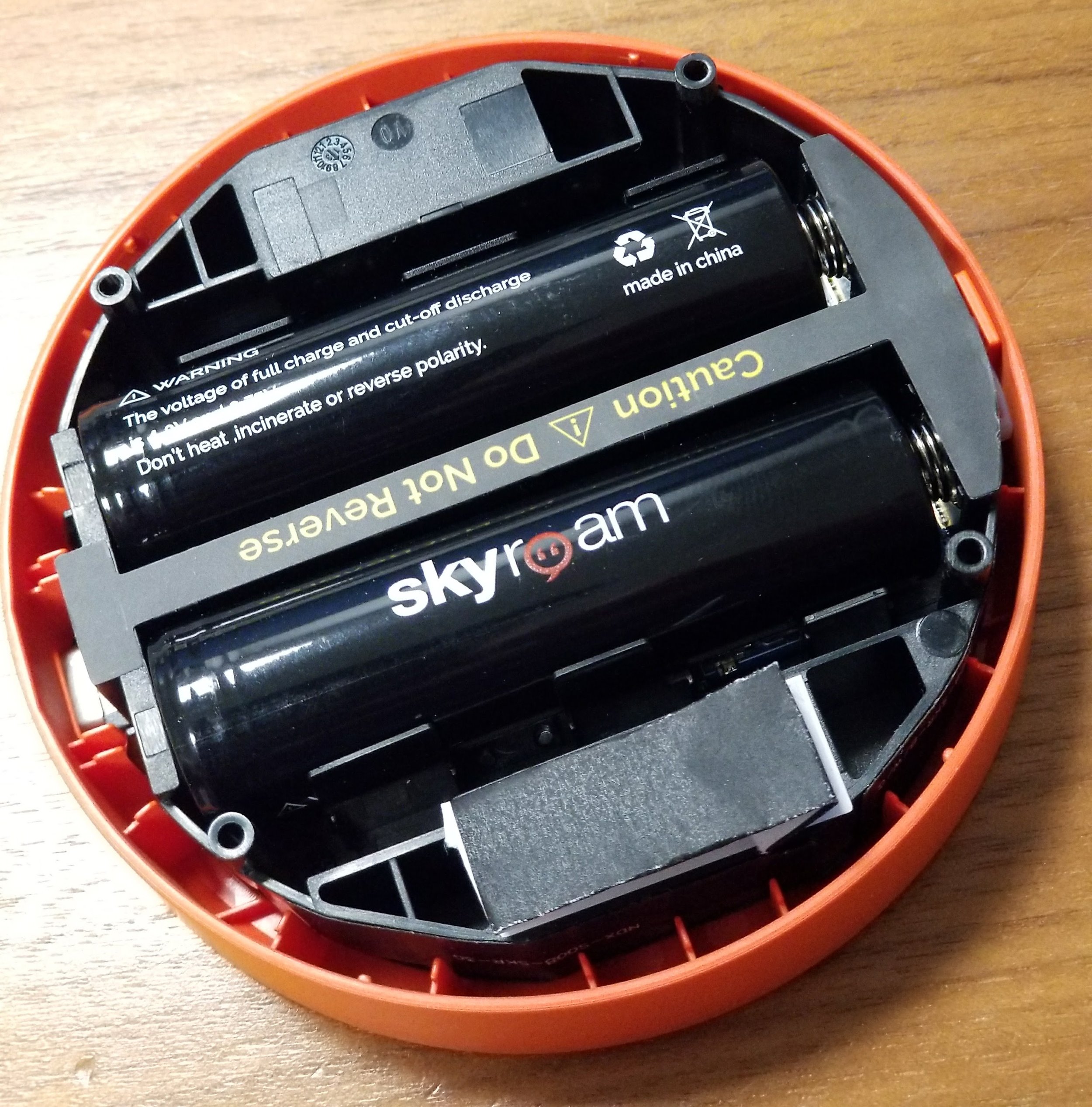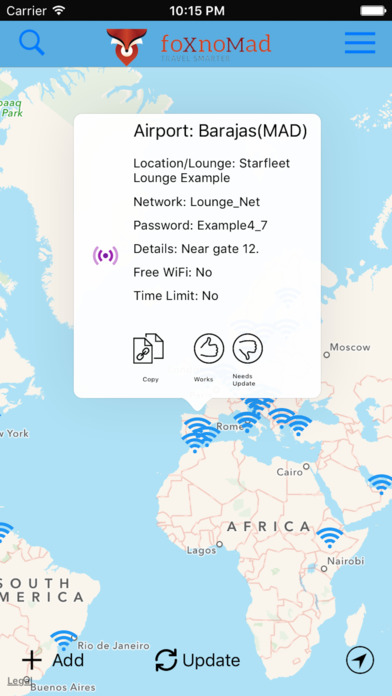I've been using a Skyroam hotspot for many years now and my 2 most popular blog posts (for the old device and service) are here:
They recently upgraded their back-end service and global WIFI hotspot, and I wanted to test and review it for you.
Solis is the latest version of the Global WIFI hotspot sold by Skyroam. For those new to this company, they offer a small portable global WIFI hotspot that works in 100+ countries, costs $10US a day for unlimited data and is activated on demand.
Although I had many complaints about the pass purchase process with the original product, their hotspot has been part of my every day (EDC) carry kit for three years now.
The Solis improves on its older brother in 2 days:
- it now supports LTE speeds on countries were it is available (otherwise it drops down to 3G)
- it can now operate as a backup battery (in a pinch) to charge your mobile phone
Nice little intro video
I have had the Solis for several months and have already taken it on a US road trip. It is a well-built successor to the original Skyroad hotspot, but the world has changed.
When I started using the original Skyroam in 2014, my carrier didn't offer a global travel package, and it was a pay per megabyte type affair. It got very expensive very fast. Today my carrier offers a US travel package for $7 a day or a global package (in 80+ countries for $10 a day).
If all you need is access on one device, then your carrier package may be more advantageous since it is immediate and does not require any changes. But.... The Skyroam Solis offers coverage in more countries and can provide wonderful internet goodness to up to 5 devices simultaneously.
In my case, I still rely on Solis or KnowRoaming when I travel since I know that they will offer service everyone for one set price and it is one less worry when I travel.
The device
If you look at the above picture, the Solis is a beautifully visible shade of orange. It is made of plastic that should withstand the rigours of travel very well. If the battery does weaken, you can order a replacement from Skyroam.
I find the Skyroam Solis much easier to carry than its competitors (including the Geefi).
Using the device
You probably noticed that the device (unlike its older brother) doesn't have a screen. To manage the device, you turn it on and connect to it from your smartphone. You will then be presented with an information page showing signal, passes left, battery level, etc. To use the device "in the field", you turn it on then press the WIFI button on the top. This automatically applies one of your day passes and you get 24 hours of internet. It knows where you are and downloads a virtual SIM for the Skyroam partner in that country.
You can travel to as many countries as you want during that 24-hour window. All you have to do when you switch countries is turn the unit off and back on. When it starts up, it will identify the local country and download the appropriate country SIM.
You could open the a.skyroam.com captive portal from any device with a browser but it is formatted for smartphones (will look odd on a laptop). Why isn't it responsive?
The Solis is charged with any USBC adaptor which is fantastic if you have a USB C smartphone and laptop. You can charge everything with one adapter. They provide a mini USB-C to USB-A adapter so you can charge other devices from the Solis but I wouldn't recommend it. WIFI needs every little bit of juice in that battery.
In my testing (in zones with good LTE coverage and with 1 device connected), I was able to eek out 10-14 hours of usage on a single charge. This number will drop if the wireless signal is weak and/or if you connect multiple WIFI devices to the hotspot. When I tested it with a Chromebook and a Note 8 smartphone, I still got 10 hours of solid use (usage was primarily web pages without heavy streaming).
The software is periodically updated which is a nice touch. I recommend you start the device and let it connect to your local home network (without using a pass) before travelling. If the device needs an update, better to do it now then at a foreign airport waiting for the 15 minute upgrade process to complete.
How fast is the connection?
I will not post speed test results because that depends on the local carrier, congestion, etc. I will say that in my testing, the Solis achieved LTE speeds comparable to an iPhone 6s Plus. The Note 8 outperformed it with is carrier aggregation technology.
There is an LTE cap of around 500MB in a 24 hour period. After this, they throttle the connection down to 2G. They claim that this isn't automatic and done to protect the experience for all customers, but I hit this limit consistently (for testing) and saw my speed drop to dial-up performance. At the lower throttled speed, even simple apps like Google Maps took forever to load, and GPS navigation became impossible.
I understand the need to control their costs but wish there were a way to buy more LTE access if I needed it.
What about security?
September 2016, I reached out to Skyroam and complained about major security gaps on their online pass purchasing website. After multiple attempts to responsibly disclose the issues (with no follow-up from Skyroam), I wrote an article about it. I am happy to report that the new version of their online portal has fixes all of the issues I previously reported.
What about the general security? It is as secure as your home internet connection. My standing recommendation is to use a VPN where/when possible. You can get a VPNUnlimited lifetime VPN subscription for 5-devices for $18 (promo link), so you have no excuses.
So should I buy a Skyroam Solis?
So the question you are asking yourself is "Should I buy the Solis?". There is no simple answer. If you used the old version, then the Solis is a wonderful upgrade. Every time I tried it, it worked flawlessly without a hitch. The cost is predictable, and I have a bunch of passes purchased ready to use when needed.
If you are a European with an EU SIM travelling within the EU, you get free roaming anyway. If you are an American with one of those great TMobile plans with free global roaming, you probably don't need this device either.
A Skyroam PR rep had said months ago that additional functionality would be unlocked on the device (like Bluetooth and GPS), but since they are not available today, I can't factor them in as a benefit.
For everyone that travels more than twice a year (and doesn't have free roaming), you really should consider it. The best recommendation I can make is that I own one and carry it with me every day (even when in my home country). I will be travelling considerably over the next four months (within the USA and globally) and will be using this thing a lot.
If you travel once a year and don't want to buy a Skyroam Solis, you can rent one directly from the company. They will mail it to you or you can pick it up (US pickup is available in San Francisco, Atlanta and Austin.)


















